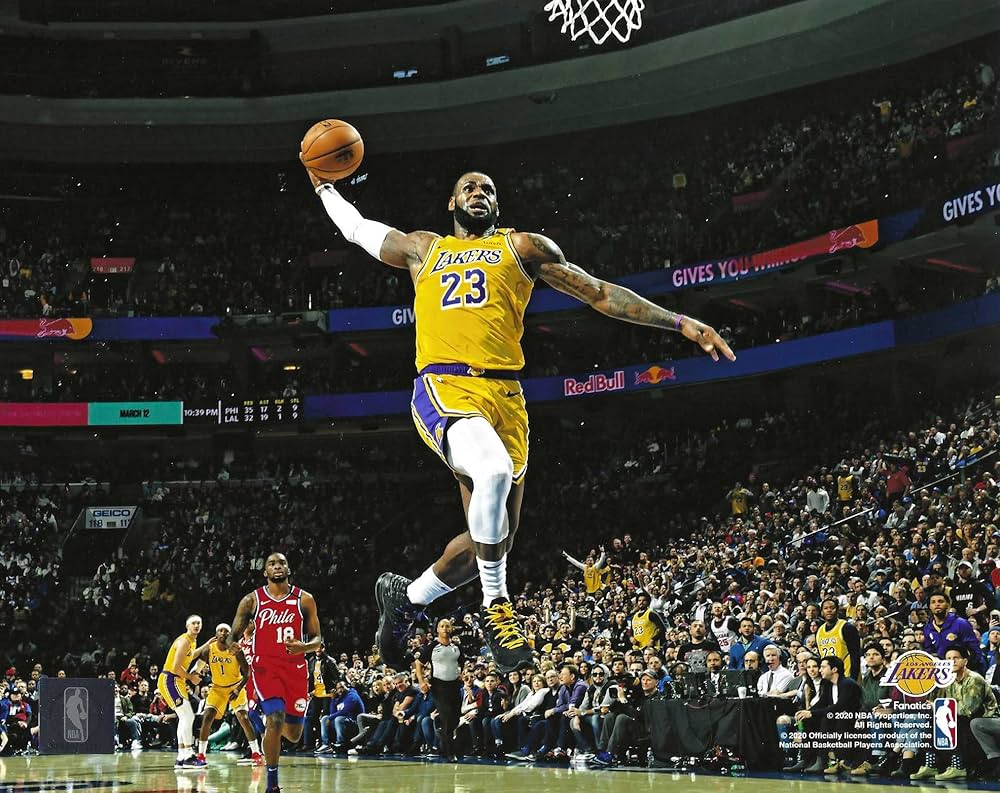
The Evolution of LeBron James: From Prodigy to All-Time Great
When LeBron James first graced the cover of Sports Illustrated at just 17 years old, the basketball world held its breath. Could any athlete possibly live up to the label “The Chosen One”? Over two decades later, the answer is not only a resounding yes — it’s something greater. LeBron hasn’t just fulfilled the prophecy; he’s rewritten the manual on greatness, reinvention, and longevity in the modern NBA.
In a league defined by eras, LeBron’s career is its own era — a 20+ year masterclass in adaptation, evolution, and sustained brilliance. From Akron to global icon, from phenom to elder statesman, here’s how LeBron James became one of the most complete players — and compelling stories — in basketball history.
Phase I: Natural Dominance and the Burden of Expectation (2003–2010)
LeBron burst onto the NBA scene in 2003 with the Cleveland Cavaliers, an 18-year-old phenom with the body of a power forward and the mind of a point guard. He averaged 20.9 points in his rookie season and never looked back. By his fourth season, he had led the Cavs to the NBA Finals with a roster many considered barely playoff-worthy.
At this stage, LeBron was a freight train in transition — unstoppable once he had momentum. But as physically dominant as he was, his jump shot lacked consistency, and critics questioned whether he had the mental edge to win when it mattered most.
Yet even then, the seeds of greatness were clear: his court vision was unparalleled, his basketball IQ off the charts, and his willingness to take on all roles — scorer, facilitator, rebounder — was unheard of at his age.
Phase II: Mastering Efficiency and Winning Culture (2010–2014)
In 2010, The Decision changed everything. LeBron joined Dwyane Wade and Chris Bosh in Miami, forming a “superteam” that would polarize fans but ultimately transform how stars navigate their careers. It was in Miami where LeBron refined his game and redefined his identity.
Under Erik Spoelstra’s guidance, LeBron became a two-way force — a defensive anchor, a mid-range assassin, and an analytics dream. He posted career-high shooting percentages, averaged over 26 points per game, and brought Miami four consecutive Finals appearances and two championships.
In 2013, he reached what many consider his peak — shooting 56.5% from the field and recording one of the highest PERs in league history. This version of LeBron was terrifyingly efficient, fully in control, and emotionally unshakable.
He wasn’t just playing basketball. He was controlling it.
Phase III: Return, Redemption, and the Greatest Comeback Ever (2014–2018)
LeBron’s return to Cleveland wasn’t just a homecoming — it was a legacy move. He promised to bring a title to a city that hadn’t won in over 50 years, and in 2016, he delivered in the most dramatic way possible.
Facing a 3–1 deficit against the 73–9 Golden State Warriors, LeBron turned in perhaps the most complete Finals performance in NBA history. He led all players in points, rebounds, assists, steals, and blocks — including The Block on Andre Iguodala, an immortal moment in basketball lore.
His game evolved into a blend of brute force and surgical precision. He used the post to manipulate matchups, directed teammates like a conductor, and wore down defenses with his pace control and decision-making.
This was no longer about athleticism — it was mastery.
Phase IV: Longevity, Leadership, and Breaking Records (2018–Present)
At a stage in his career when most stars decline, LeBron James simply recalibrated. With the Los Angeles Lakers, he assumed a more cerebral role — leading the league in assists in 2020 while guiding the team to a championship inside the NBA Bubble.
He improved his perimeter shooting, optimized his workload through recovery science, and leaned into mentorship — helping develop young talent while still averaging over 25 points per game.
In 2023, he became the NBA’s all-time leading scorer, surpassing Kareem Abdul-Jabbar — a record that stood for nearly four decades. He didn’t break the record through volume scoring bursts, but through an astonishing level of consistency: he has averaged at least 25 points per game for 20 consecutive seasons.
His longevity is no longer a feature of his career. It is the career.
The Numbers Behind the Legacy (As of 2025):
| Category | Career Stat |
|---|---|
| Points | 40,000+ |
| Assists | 11,000+ |
| Rebounds | 10,000+ |
| MVP Awards | 4 |
| NBA Championships | 4 |
| All-Star Selections | 21 |
| All-NBA Teams | 19 |
LeBron is the only player in league history to record over 40,000 points, 10,000 rebounds, and 10,000 assists — a statistical portrait of complete basketball impact.
Beyond Basketball: The Social Force of LeBron James
Off the court, LeBron has wielded his platform with clarity and courage. From founding the I PROMISE School for at-risk children in Akron to leading voting initiatives and producing socially conscious content through SpringHill Entertainment, he’s helped redefine what it means to be an athlete in the modern era.
His business acumen and activism have earned him comparisons to Muhammad Ali, not just for his words, but for the sustained action behind them.
Conclusion: A Career Built on Evolution
LeBron James’ journey is not a straight line of dominance — it’s a constantly evolving blueprint. Each chapter of his career reveals a different strength: raw power, tactical refinement, strategic leadership, and finally, timeless resilience.
Some athletes burn bright and fast. LeBron has burned long, hot, and smart. He is not just in the GOAT conversation — he’s changed how we define what “greatest” even means.
Whether you crown him the best ever or not, one thing is indisputable: no one has ever done it like LeBron James.